This past weekend, I had the extreme pleasure of taking Tom Given’s 3-Day Rangemaster Instructor Development Course at KR Training outside of Austin TX.
I’ve written a couple times about Tom Givens and why I consider him one of the “premier” trainers for teaching regular, every day people how to carry a concealed gun that will save their life.
Again, what’s so impressive about Tom is not just the man himself (even though his list of accomplishments would stack up against anyone, anywhere) — it’s his student’s results …
At last count (Jan 2015) Tom has had 65 students involved in defensive shootings (that he knows of) with a record of 62 wins/zero losses/3 forfeits.
In other words, of those 65, every single one who was armed at the time of the event won their fight (62 wins).
No student of Toms who was armed at the time has been killed (zero losses).
However, three students found themselves in need of a defensive handgun and did not have one. All three were killed in separate street robberies. In the last incident, the victim had handed over his wallet and cell phone and was standing there with his hands in the air when he was shot in the face and killed. These are the three forfeits.
As far as I am aware no other trainer in the country has a record like this (I am not even aware of any other firearms trainers that are able to track these things).
Today, I’d like to tell you a little about the experience … what I thought of the training … and how I “failed” the course.
Heck, I’ll even share some embarrassing pics with you too 🙂
Why The Rangemaster 3-Day Instructor Development Course?
I took a 1-day intensive pistol and 1-day intensive shotgun course with Tom and immediately signed up afterwards to take the Rangemaster 3-Day Instructor Development Course.
Why?
Because I’m always on the lookout for the best training possible … and … because Tom is so well respected, that I wanted a certificate with his “stamp of approval” on it.
You see, Tom has been carrying a gun professionally for over 40 years (former Police Officer) and has been conducting training for over 35 years (in other words, he’s been teaching this stuff longer than I’ve been ALIVE!)
He was involved in setting up the first “practical shooting” competitions in the U.S. and is a former champion IPSC and IDPA competitor (he holds an IDPA Master rating in three divisions).
He has been on the cutting edge of pistol craft since this type of training began in the 70’s in this country and has continued to adapt and improve his curriculum since that time.
As a fellow attendee to Tom Given’s last class here in Virginia said, “In a class like this you are getting a distillation of all the stuff that’s been proven to work from [Jeff] Cooper until now. It is pure essence of superior defensive pistolcraft … and it’s impossible to be exposed to it without walking away a much more dangerous foe for any criminal inclined to attack you.” (Tim from GunNuts.net)
After Action Report (AAR)
Course: Rangemaster Three-Day Firearms Instructor Development & Certification Course
Where: Bastrop/Lincoln TX, KR Training
Dates: Friday July 24 to Sunday July 26, 2015
Students: about 20? (I’m not exaclty sure)
My equipment: Eye and ear pro. Hat. Glock 19 Gen 4 with 4 magazines. Two SafariLand 074 magazine holsters weak side. IWB crossbreed SuperTuck strong side. MagLula speed loader. Speer Lawman 124gr 9mm ammo. I think that’s it.
This was a dense and intensive course that was run really well. In other words, every single minute of every hour was accounted for and kept on track by Tom. Time was split 50/50 between the classroom and the range.
It’s important to note, this was not a beginners class or a course to learn “how to shoot” this was a class to polish those skills sure, but mostly geared towards how to teach your average citizen how to conceal carry and prevail in a gunfight.
The KR Training range was nice and perfect for this class. It was the middle of summer in Texas, so it was hot and sweaty the entire time, but it was still beautiful as you can see in the following pic:

Rangemaster says this about the content of their course:
“This is an intensive full three day (24 hours total) course that teaches candidates:
*** Modern adult learning theory
*** Preparation, delivery, and documentation of training
*** Development of training aids, including power points and others
*** Coaching methodologies, diagnosing and correcting shooters’ errors
*** Modern, effective gunhandling techniques, designed to work under stress
*** Proper handling/operation of a variety of handgun types
*** Effective, efficient combat marksmanship technique
The course time is divided about equally between classroom sessions and range firing, and each student will fire approximately 1,000 rounds of ammunition. Students will act as coaches for other students, and each will be coached extensively in turn. Students also receive a 200+ page training manual, which is a valuable information and reference resource. To graduate from this course, students must pass a shooting qualification, pass a written examination, and conduct a brief presentation in the classroom on an assigned topic. “
And I would say that was spot on.
DAY ONE: I get to be “that guy” …
We all showed up and the teaching began in the classroom. This was a long block of classroom teaching until about lunch time if I recall correctly.
Very early in the day, I earned the nickname “That Guy” for giving a funny (at least to me) answer to one of Tom’s questions — to which he promptly assigned me my nickname. If you’ve never been to a firearms training course … “That guy” is usually the guy who is screwing up or is otherwise being “That guy” in the course.
Then we hit the range to go over the basics. Effective, efficient combat marksmanship and gun handling skills were discussed, demonstrated and practiced by all of us with an emphasis on “how to teach this” to others. Once on the range we were paired up with another student so one relay could shoot while the other practiced coaching (fixing mistakes, etc).
Tom explained that he was basically seeing where the class was at. I think we shot some type of qualification type drills so that he could assess where the class was and what needed to be perfected before moving on. Just as importantly he explained how to test these things yourself in your own classes, so you can tailor your teaching to your audience …
After a lot of time on the range, we came back in the classroom for more learning. We may have hit the range again for more training, but I can’t remember actually. I do remember thinking “Tom is smart to break up all the sitting down and learning stuff with the range time because it’s a perfect amount of each”. We shot probably 150-200+ rounds on day one.
DAY TWO: A full day of shooting …
Day two began in the classroom again, but in short order we were out on the range and shooting. Tom promised that the majority of the shooting was to happen on this day and he didn’t disappoint (Round count this day was around 500).
Then there was classroom time … then more range time.
As I said there was a lot of shooting this day. We did numerous drills and practice exercises. The point of this I believe was two-fold:
1.) to teach us something and keep the class interesting and
2.) to show us some drills we should put in our own classes and curriculum.
One of these drills was the “Casino drill” which is shot with multiple colors and numbers and requires the shooter to “think with the gun”. We did numerous drills with it and then Tom explained that there are multiple ways to help stress students (to prepare for the stress of a self-defense shooting) and a great way was shooting drills while your peers watch. So we all got to individually shoot the Casino Drill for time. I believe my time was 14.something seconds clean (aka no misses) on this 21-shot (3 mags of 7 rounds) drill … it could have been a few seconds slower–but I know that the SWAT team instructor who was taking the class was at least 2 seconds faster than me (if I recall correctly he was the fastest of this drill and all the others).
Another notable moment with the Casino Drill was a “head-to-head” competition with the other shooters on the line. Basically, if you missed or were the slowest you were off the line. At one point, with my line it came down to just me and one of the assistant instructors who decided to shoot the drill (who I’m sorry I can’t recall the name of right now). We were going head-to-head for a bit and I finally lost because I did too many pre-emptive speed reloads in between shot strings (aka, I dropped a not empty mag to “top off” my gun so I wouldn’t have to get caught doing a slower slidelock/emergency reload) … and promptly used up all 3 of my Glock 19 mags — leaving me halfway through a shot string with a slidelock and no reloads 🙁
(For the record, that was the only obsenity I screamed the whole weekend, lol).
I regret not taking my usual little notepad onto the range with me like I normally do in classes because I didn’t get to write down comprehensive/exact scores and notes about my performance and what we covered each day (though I kept pretty good notes in the classroom). So sorry for that, I’m reporting most of this by memory a couple days later.
DAY THREE: The Testing Day
The last day contains all the testing. Lest you think it was all testing, there was still more learning throughout the day.
We shot two tests for recorded score. Both were timed, both were shot twice (the best score was recorded) and both were shot on the Rangemaster Q target shown below:

While this is similar to the QIT-99 silhouette used by the actual FBI, there are some subtle differences that make it better (aka HARDER for you the student, in a good way).
The “bottle shaped” target represents the upper torso and head of a grown adult male like the FBI QIT-99 silhouette. The bottom of the target extends only an inch or two below the diaphragm. This makes the target much smaller than your typical silhouette and thus does not reward low torso hits that would be of little value in a fight (As far as I know, this is the reason the original FBI Q Target was redesigned to the smaller QIT-99 silhouette for the FBI as well).
In contrast to the FBI QIT-99, which has solid black and easily seen lines for the anatomically correct target zones, the Rangemaster Q Target Zones are not easy to see.
In the chest of the target is a faintly outlined box that is seven inches wide and nine inches tall. This corresponds exactly to the area from the collarbone to the diaphragm and inside the nipples. In the head there is a 3×3″ ocular window.
What makes the Rangemaster Q Target different and more challenging is the target itself is a dull, neutral gray color, and the scoring lines are also a similar gray color and cannot be seen while shooting (at least not as easily as the FBI QIT-99 from farther distances). This forces the shooter to engage the correct part of the target without visible scoring lines.
In short, the Rangemaster Q is a more realistic target to use when training for a gun fight (because humans don’t have bold black lines outlining where you should aim!)
The first test was the new FBI Qualification Course …
I’ve known about this course for some time, and I’ve even written about it here but this was the first time I shot it. For me, the long range shots (15yds +) of this course were challenging.
Here’s what’s important to note: the FBI qualification course only requires hits inside the entire “bottle” shaped silhouette. An FBI agent must score 80% (48/60 hits inside the bottle) and an FBI firearms instructor must score 90% (54/60). Therefore, Tom required everyone to achieve at least a 90% score to pass. I dropped one shot out of 60 per each run — 59/60 — scoring the exact same score both times — 98.3%.
The second shooting test was directly after the FBI Qualification Course which Tom said was a “warmup” for the real test …
The Rangemaster’s Instructor Qualification Course …
The Rangemaster course was much harder because not only did it vary from the FBI course (the Rangemaster course required moving then shooting, such as sidesteps at the appropriate distances) — but the target zones were much smaller.
In other words, only hits inside the anatomically correct 7×9 inches chest zone and/or 3×3 inch ocular cavity head zone counted.
A perfect score is 250. My first run through I shot 238, keeping all hits inside the “bottle silhouette” but dropping quite a few outside the anatomically valuable target zones (I believe all those misses were at the 15+ yard distances).
My second run through, I only dropped one shot (once again at the 25 yard distance, GRRR!) leaving me with a final score of 248 (2 point deduction for the one miss outside of the anatomically correct 7×9 chest zone–even though it was only inches above and still inside the silhouette–it was not a “good” hit). I believe (but am not certain) that 225 is the minimum passing score because I gather that Tom likes the 90% or better standard for his instructors.
[It’s important to note that just paying for this class does not ensure that you pass it. The shooting tests (and written test for that matter) are objective standards and they are pass/fail. As far as I am aware there were a few students who did not pass the shooting tests and Tom said that while handing out certificates there were some students who did not pass at all.]
After all the shooting, there was more classroom learning. I seem to remember it being quite hot this day and the classroom time was welcome. It was also to cover more things that would be on our next (written) test.
The written test was next and was also timed. I was the first to finish and while I felt confident I had passed, there were a few questions I wasn’t sure I had gotten “exactly” correct. (I’m not entirely sure, but it’s my suspicion that you needed a 90% or better score on this test to pass as well).
Towards the end of the day (I can’t remember if it was before or after the written test to be honest) we all shot about 20 rounds through various revolvers on the range because many people (myself included) did not know much at all about how to run a “Wheel Gun” for concealed carry (aka combat reloads vs administrative reloads, etc). I might purchase a J-Frame or other similar concealed carry revolver in the future just so I am competent in its use but this further solidifies my experiences that the wheel gun is completely obsolete for a defensive carry pistol.
What I learned …
In short … a lot 🙂
Simply watching Tom teach is a lesson in teaching itself. I get the impression that every single word, every sentence, and every personal anecdote that comes out of Tom’s mouth has been carefully chosen after many decades of whittling away at his curriculum, until only the most impactful message is left with the fewest words spoken, and the highest benefit for his students.
In other words, Tom does not waste words and he can often get a point across in just one sentence that might take a lesser teacher 10 minutes to explain. If you are an instructor, you truly can learn a lot just by being present and paying attention to the way he teaches.
I know that everyone likes shooting (it’s definitely my “Favorite” part) but what sets Tom’s stuff apart — to me — is the quality of the data he shares as well.
Not only does he have over 40 years of experience of his own to draw from, I get the impression that he is much, much smarter than he wants everyone to know (I’m sure many people hear his Tennessee southern accent or don’t see a bunch of letters after his name indicating some advanced university ‘higher learning’ degree and immediately judge him as less intelligent) …
In actuality, Tom revealed he has over 300 manuscripts alone in his personal library on firearms and gun training topics–some dating back 100’s of years. Further, I know that this is just a portion of what Tom has read. It’s evident in his extremely precise language (and how often he makes the point that our language and word choice is so critical as instructors) and overall impact as a teacher using examples and unrelated data to get points across.
I’m not sure if Tom has ever taken an IQ test (if he has, I doubt he would be the guy to brag about it) but I’m pretty sure he’s a damn genius. At the very least (because I don’t believe that one’s success has anything to do with generally measured intelligence) he is a certified polymath.
A polymath is a person whose expertise spans a significant number of different subject areas; such a person is known to draw on complex bodies of knowledge to solve specific problems–it’s first use was to describe the great thinkers of the Renaissance–its basically where we get the term “Renaissance man” from.
(I kind of consider myself a polymath, that’s why I think it fits him perfectly).
So why did I say I “failed” The Rangemaster Course?
Well, simply because I was not perfect and I was not the best in the class …
You see, on day one, Tom told us the 2 shooting tests and written test were in store and that there would be an award for the “Top Shot” of the class and whoever scored 300 (perfect 100% on all three tests).
He then explained that we were all not just “type A” but “Type A Plus” people to even be in a class like this and that he was sure we would all be gunning for that spot.
To my knowledge, nobody in our class achieved the perfect 300 score across all three tests. The SWAT firearms instructor was the “top shot” though (I believe he shot both tests 100% all 4 times) and we both scored the same on the written test.
I was the second highest combined score in the class, followed closely by a Frenchman turned American (obviously channeling his revolutionary war fighting ancestors) who did extremely well on the shooting tests as I recall.
So I say I “fail” about half serious. To me, I want to continue to pursue a high standard in all that I do. And watching a guy like Tom … in his 60’s … who hadn’t shot more than 100 rounds in the last couple months … completely cold on day 3 … be able to demo every single drill he would ever ask you to do and NAIL it 100% of the time shows you how important “on demand” skills are.
Because lets face it … I can either make all kinds of excuses about why something went wrong, etc … or I can accept that my “on demand” (aka unconscious competence) skills are not up to par.
The smart thing to do is admit you’re not that good and then get to work. When you can compare yourself to objective standards such as these they give you “progress reports” and inform you of the areas you need to improve.
And something else to think about …
I can pat myself on the back and go “yeah but I only missed one shot each time!” … then I think of the “Tactical Professor” Claude Werner’s line, “every bullet you fire in an urban area that doesn’t hit your target is heading for a bus load of nuns and orphans being followed by a limousine full of personal injury lawyers on a conference call with the District Attorney. We have to get used to the idea that the only safe backstop for our bullets is the criminal’s body, period.”
That’s all that kept going through my head. So that’s why as soon as my blisters on my dominant hand heal up, I’ll be going back to dryfire and other training.
In any event, I did actually “pass” but as often happens, I failed the high standard I set for myself at the start of the course (300 score). I got my certificate and here is a picture of Tom and I after the course (I went ahead and did Tom the honor of putting my name aka “That Guy” on the certificate for this picture):

(That’s the “embarrassing” picture I mentioned earlier because “that guy” was my nickname for the entire class 🙂 )
In Conclusion …
If you are an active firearms instructor, or you’re thinking of becoming one, then I highly recommend the Rangemaster Instructor Development Course.
Heck, if you are not a “beginner” and you want to get better at learning not just the “how” but also the “Why” of what you’re doing then I recommend this course.
Also, consider that if you are the “Gun Guy” in your family or circle of friends, then you are often going to be many people’s first and quite possibly maybe last firearms instructor as well, so taking an instructor course like this might not be a bad way to spend three days of your time …
This was a great investment in my own education, and I still have a ton of notes and things I picked up that I’ll be sharing with you in the future.


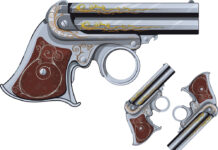
![Case Study: Defensive Gun Use [Video] NSFW](/wp-content/uploads/2025/07/Depositphotos_282075792_S-218x150.jpg)

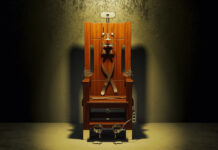




![What Level Holster Should You Be Using? [Video]](/wp-content/uploads/2024/04/Depositphotos_44548439_S-218x150.jpg)
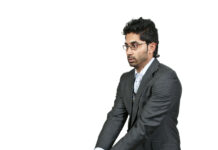

![How Many Shots Will It Take? [Video]](/wp-content/uploads/2025/06/Depositphotos_2724272_S-218x150.jpg)







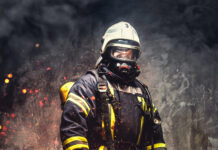




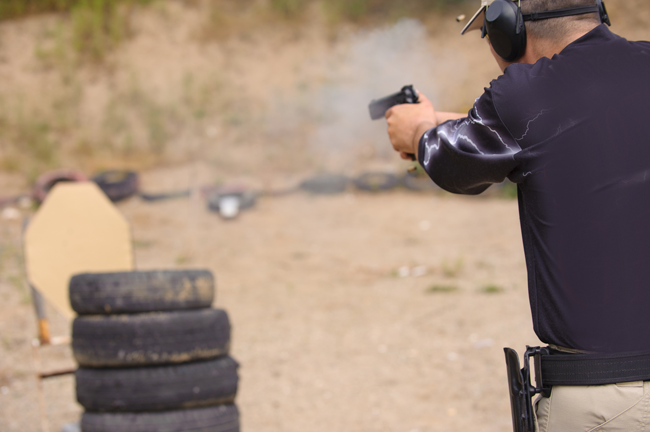






![Optic Ready vs Milled slides? [Video]](/wp-content/uploads/2024/02/image-3-100x70.png)
![[Checklist] What Gear You Need To Take Pistol, Rifle & Shotgun Training Courses [Video]](/wp-content/uploads/2023/07/Depositphotos_275087632_L-100x70.jpg)
![What is in Carter’s 2023 EDC? [Video]](/wp-content/uploads/2023/07/Depositphotos_146856137_L-100x70.jpg)



Congratulations Caleb. But I’m wondering if there are any good defensive shooting courses for people who have disability’s. I have a bad back and am rather overweight (can’t exercise due to the back and COPD), so a course that is designed for someone to have to move around a lot will not work. I need a cane to walk more than a few steps and if I had to squat or get prone it would take a LOT of effort for me to regain my feet. I knows there’s others out there like me, so perhaps an article from you on courses would help us who have limited mobility would be nice. Thank you.
That’s not a bad idea and you’re right there are lots of others in your situation.
That said, every course I’ve been to the instructors have been VERY accomidating to allowing the students to adapt the positions, etc to their own pace.
When we took our little course, to get our CCW license, I had done a lot of dry firing on the computer, where you get a target every couple seconds. Had bought a new pistol that I had never fired. On the shooting part, we all had to try a revolver, and I chose a 38 Special P because of the sights. All but one bullet into the center black of the target, the one I missed was a shot tried using front sights only, put on target fast and fire, it hit at the 11: o’clock position just outside the center target. When I got to use my own gun, my first two shots were at 7:00 below the target, the instructer had come along and watched me, “What am I doing wrong?” I asked….”That’s where you were aiming” he retorted…”No it isn’t” I argued… He put a dummy round in my pistol, and said fire 4 shots. The first shot was the dummy…non round. “Did you see it?” he asked “Yes!!” I tried to counter recoil on the Bersa Thunder 380, by pulling downward…After that all my shots went into the black…I really felt bad at the end when I saw others targets, many with none in the black! Really wished I had done far more snap shots with front site only.
Good on you doing so much dry training! Sounds like it paid off!
As one who has quite a few infirmities, old age being one of them, all I can say to the disabled is practice, practice,practice. If you can’t hit what you are aiming at don’t carry a gun.
Comments are closed.